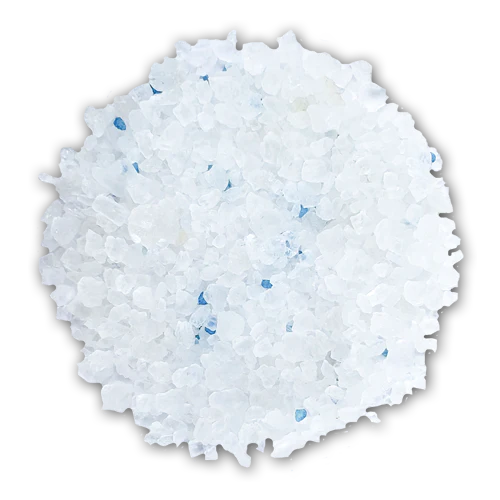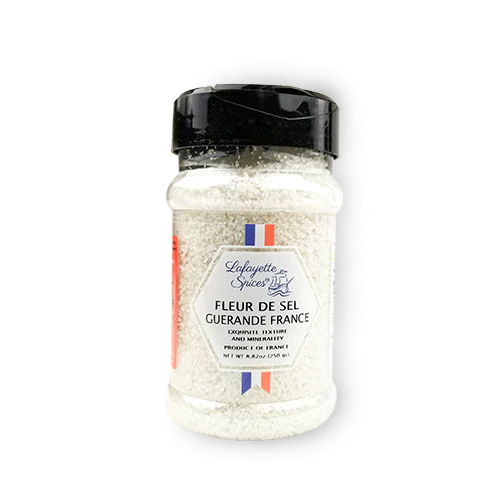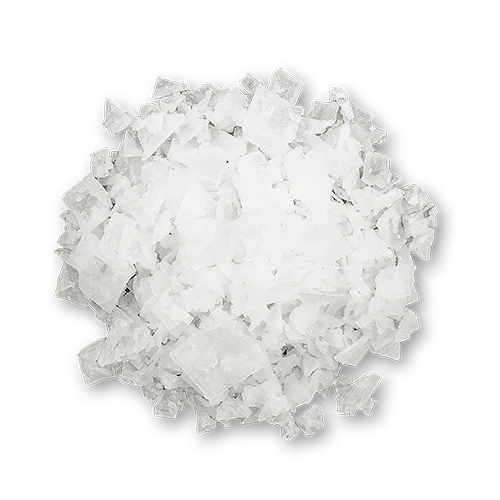
Fleur de Sel: Why This Salt Still Owns the Pass
You’ve seen it dusted over foie gras. Sprinkled on ganache. Crowned atop scallops. But Fleur de Sel isn’t just a finishing salt — it’s the finishing move. It’s the salt that turns technique into applause. The moment that makes a guest pause their fork midair.
Ready to elevate your plating game? Start plating like it matters →
What Is Fleur de Sel?
Fleur de Sel is a rare, hand-harvested sea salt from coastal France, valued for its delicate, flaky crystals, soft briny flavor, and use as a finishing touch on gourmet dishes.
Harvested from the salt ponds of Guérande, it forms only under perfect sun and wind. Artisans rake it gently, preserving its fragile, mineral-rich flakes. No refining. No bleach. Just intention.
This salt isn’t factory-born. It’s harvested with intention and tradition — a seasoning that carries the story of its origin in every crystal.

Fleur de Sel isn’t just collected — it’s harvested entirely by hand, the same way it has been for over a thousand years.
Using traditional wooden rakes called lousse, salt workers (known as paludiers) gently skim the delicate salt crystals from the surface of the salt pans.
No machines. No shortcuts. Just centuries of technique passed down through generations.
A Brief History Behind the Flake
Fleur de Sel has been hand-harvested in the Guérande region of France since the 7th century. Its name, meaning “flower of salt,” comes from the delicate crystals that bloom on the surface of salt pans — gathered with wooden tools by skilled salt workers.
This process hasn’t changed in over a thousand years — and that’s the point. The precision, care, and tradition behind each harvest are what give Fleur de Sel its character, its integrity, and its place on the pass.
Why Chefs Still Choose It
Fleur de Sel doesn’t just season. It finishes. It melts into texture. It sharpens without stealing the spotlight.
"For raw dishes or plated desserts, Fleur de Sel is the final punctuation. Nothing else comes close."
- Chef Taylor | Lafayette Spices
Use it where texture matters. Where the dish is finished, but the story isn’t.
How to Use It (Like You Mean It)
- Seared scallops (Try our Lemon Butter Seared Scallops recipe) or foie gras — kiss the crust
- Chocolate or caramel — sweet meets salt
- Tartare, crudo, citrus — sharp and elegant
Pro tip: Never cook with it. Heat destroys what makes it magic.
Chef Taylor's Tip: Try it on grilled watermelon with micro basil. The contrast is wild — it’ll make your line cooks stop mid-shift. When I first switched to Fleur de Sel on our tartare — it was game over. Guests didn’t ask ‘what’s in it,’ they asked ‘how.’
Top 5 Uses in a Professional Kitchen
- Finishing raw proteins (tartare, sashimi, carpaccio)
- Enhancing chocolate or caramel-based desserts
- Adding final texture to grilled seafood
- Highlighting the sweetness in roasted vegetables
- Contrasting fresh fruit or herbs in cold plates

Ingredient Pairings that Shine with Fleur de Sel
- Dark chocolate & caramel – Clean, oceanic contrast
- Citrus fruits – Elevates brightness
- Raw seafood – Scallops, oysters, tuna
- Goat cheese & burrata – Mineral snap on creamy textures
- Roasted root vegetables – Highlights caramelization
- Fresh herbs – Especially basil, tarragon, microgreens
- Melons & stone fruits – Watermelon, peach, plum
Pair wisely. Salt doesn’t just season — it speaks.
Myths Worth Shattering
- “It’s just expensive sea salt.” Fleur de Sel is a surface crystal, not mass-produced. Its texture and moisture are unique.
- “It’s just for sweet dishes.” It also adds finesse to savory proteins, fat, and raw plates.
Finishing Salt Showdown
| Salt Type | Texture | Flavor Profile | Best For | Chef Insight |
|---|---|---|---|---|
| Fleur de Sel | Moist, delicate flakes | Soft, briny, mineral-rich | Raw dishes, scallops, desserts | “Elevates without overpowering.” |
| Pyramid Salt | Crisp, pyramid flakes | Clean, sharp | Roasted veg, chocolate, cocktails | “Adds crunch and structure.” |
| Smoked Salt | Coarse, dense | Earthy, smoky | Grilled meats, BBQ | “Brings fire without flame.” |
| Himalayan Pink | Chunky | Earthy, slightly sweet | Visual garnishes | “Use sparingly.” |
| Celery Salt | Fine, powdery blend | Savory, slightly bitter | Egg dishes, dressings, Bloody Marys | “Unexpected. But unforgettable on brunch plates.” |

Storage Tips
Keep it in a sealed glass or ceramic jar. Cool, dry, no plastic. Treat it like flavor gold.
FAQ (Chef Edition)
-
Can I cook with it?
Yes, but don’t. You’ll lose the texture that makes it elite. -
Why is it so expensive?
It’s artisanal — sun-dried, hand-harvested, weather-dependent. -
What does it taste like?
Clean, briny, with a soft mineral kick. -
Is it healthier?
Unrefined + trace minerals. But still salt — season smart. -
Best dishes to finish?
Scallops, dark chocolate, fresh citrus, tartare, and toast. -
Where to get it?
Right here → Chef-grade and shelf-stable.
Why Ours?
You’re not plating for likes. You’re plating to make noise. Our Fleur de Sel keeps its moisture, its flake, and its edge — even on the pass.
Chef Taylor’s Note: “I use this salt when I want silence after the first bite.”
Ready to Finish Strong?
This isn’t seasoning. It’s signature. Shop Fleur de Sel → Check out our Premier Spice Set












